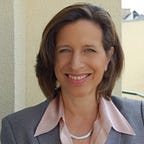The UNHCR Communications Charter: How We Do It
As Head of Communications at UNHCR I am often asked how we get people to care about the growing numbers of forcibly displaced people across the world.
My team and I put together this Communications Charter which sets out how we try to use communications to make the world a more compassionate place for refugees.
1We embrace the new era of communications. We live in a media age that is exploding with new digital technologies, that is highly transparent yet also full of “fake news”. We now have abundant possibilities to reach vast audiences with our messages and content — and far more knowledge about who we want to reach and what we want them to do.
2 We target strategically. We tailor our work for multiple audiences, worldviews and channels of communication. Our aim is to reach the people who can make a difference and publish on the platforms where they spend time. Audience research and media-impact studies help us produce and target content in relevant formats and languages.
3 We communicate like human beings. We try to connect with people in authentic, emotive and compelling ways, underpinned by the news and enlivened by individual stories, with refugees at the centre. The readers and viewers we seek to engage seldom tolerate wonky policy jargon, so we strive for clear, conversational language.
4 We advocate internally for communications. We show colleagues how speaking out publicly for the rights of refugees helps protect refugees, and how our moral authority rests on our public positioning. Our work involves seeking out information internally and transforming it into clear messaging, credible news and memorable stories.
5We hire, train and empower. We recruit the best and brightest communicators and content creators. We help colleagues hone their skills and empower them to advocate for people who are displaced or stateless. We train senior leaders on how best to engage in digital diplomacy. We work as a global network to speak with one voice.
6We create news that journalists will trust and use. We release news that is timely, relevant and rigorously researched. Our spokespeople are trusted sources who not only react to media demands but also partner with journalists to help them cover refugee issues in greater depth and with unique access.
7 We craft compelling, strategic content in different multimedia formats and versions designed to spark empathy, build communities and inspire our audiences to take action. Our content is topical and linked to key messages, strategic objectives and fundraising goals. We combine statistics, hard news and human stories to create impactful content.
8 We treat each media platform separately. We develop bespoke strategies and adapt content for every ecosystem and communication vehicle — outreach for print journalists, B-roll for TV, audio for radio and podcasts, videos for Facebook, weekly broadcasts for Facebook Live, striking photographs for Instagram, strong messages for Twitter, narrative newsletters for email.
9 We prioritize effective distribution. With digital technology, especially social media, we can reach more people, more often and more directly than ever before. We keep an eye on new technologies and emerging platforms and use them to reach our audiences directly. We team up with Goodwill Ambassadors, celebrity supporters, digital influencers and media partners to amplify our messages.
10 We measure and adjust. We gauge the impact of our media work and campaigns to see if our messages are reaching key audiences and how well UNHCR is recognized in a competitive field. Where we see weak impact, we work to improve how, when and where we communicate. We learn from our successes and build on them.
Access the UNHCR multimedia library Refugees Media to download photos and videos on topics related to displacement.
Follow Melissa Fleming on Twitter and connect with UNHCR spokespeople here.
